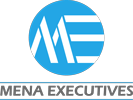In today’s competitive business environment, having a strong talent acquisition strategy is crucial for long-term success. Companies need to attract, retain, and develop top talent to maintain a competitive edge and drive growth. One of the most critical components of an effective talent acquisition strategy is placement – ensuring that the right individuals are in the right roles at the right time. A well-structured placement strategy not only helps businesses fill vacancies but also contributes to organizational stability, employee satisfaction, and long-term business success.
For businesses in Saudi Arabia, Qatar, and Dubai, where industries are expanding and evolving rapidly, placement plays an essential role in shaping workforce strategies. As these economies continue to grow, organizations must develop placement strategies that align with their long-term goals, ensuring they attract and retain high-caliber professionals.
1. Understanding the Importance of Placement in Talent Acquisition
Placement is more than just hiring employees to fill positions – it is about finding individuals who align with a company’s culture, goals, and future vision. When done correctly, placement helps businesses build high-performing teams that drive innovation, efficiency, and business success.
In Dubai, where international businesses thrive, strategic placement ensures companies attract top-tier professionals from around the world. In Saudi Arabia and Qatar, where economic diversification is a key priority, effective placement strategies help organizations secure the right talent to lead transformation efforts in emerging industries.
2. Aligning Placement with Business Objectives
For placement to be effective, it must be aligned with the company’s short-term and long-term business objectives. Organizations need to assess their workforce needs and plan their hiring strategies accordingly.
In Saudi Arabia, where Vision 2030 aims to diversify the economy beyond oil, businesses must place leaders and specialists in industries such as technology, tourism, and finance. In Qatar, infrastructure development and sustainability projects require skilled professionals in engineering, logistics, and environmental sciences. In Dubai, where businesses operate on a global scale, placement strategies should focus on attracting international talent with experience in competitive industries such as finance, technology, and real estate.
3. The Role of Data in Strategic Placement
Data-driven recruitment is transforming the way businesses approach placement. Organizations that leverage workforce analytics and predictive hiring models can identify the right talent more effectively and make better hiring decisions.
Companies in Dubai are using artificial intelligence (AI) and machine learning to analyze candidate data and improve hiring accuracy. In Saudi Arabia and Qatar, businesses are adopting HR analytics to assess workforce trends, evaluate skill gaps, and develop effective placement strategies.
4. Placement and Workforce Nationalization
Governments in the Middle East are increasingly focusing on workforce nationalization initiatives, such as Saudization in Saudi Arabia, Qatarization in Qatar, and Emiratization in the UAE. These policies require businesses to hire and develop local talent, making strategic placement even more critical.
Organizations must balance their need for international expertise with nationalization goals, ensuring that placements align with government regulations while also supporting business objectives. Effective placement strategies that integrate local talent with expatriate expertise help businesses build a strong, sustainable workforce.
5. Enhancing Employee Retention Through Strategic Placement
One of the primary benefits of an effective placement strategy is improved employee retention. When employees are placed in roles that match their skills, interests, and career aspirations, they are more likely to remain with the company long-term.
Businesses in Saudi Arabia and Qatar are investing in professional development and mentorship programs to ensure long-term retention of local talent. In Dubai, where high turnover rates can be a challenge, companies are focusing on employer branding and career growth opportunities to improve retention.
6. Placement in Executive Search and Leadership Hiring
For senior leadership and executive roles, placement becomes even more strategic. Businesses must not only find experienced candidates but also ensure that these leaders align with company culture and long-term vision.
In Dubai, where multinational companies require global leadership, executive search firms help organizations identify and place leaders who can drive international expansion. In Saudi Arabia and Qatar, leadership placement is critical for industries undergoing transformation, such as renewable energy, healthcare, and digital innovation.
7. Leveraging Technology for Smarter Placement Decisions
Technology is revolutionizing talent acquisition and placement. AI-powered recruitment platforms, applicant tracking systems (ATS), and digital assessment tools are helping companies streamline hiring processes and improve candidate matching.
In Dubai, HR technology is widely used to optimize hiring strategies. In Saudi Arabia and Qatar, digital transformation initiatives are driving the adoption of AI-driven recruitment platforms to enhance workforce planning.
8. The Role of Placement in Workforce Diversity
Diversity and inclusion have become key priorities for businesses looking to enhance creativity, innovation, and decision-making. Companies with strong diversity initiatives attract top talent and build dynamic work environments.
Organizations in Dubai are focusing on gender diversity and multicultural hiring to strengthen their global positioning. In Saudi Arabia and Qatar, workforce nationalization efforts are complemented by diversity strategies to create more inclusive workplaces.
9. The Future of Placement in Talent Acquisition
As businesses in Saudi Arabia, Qatar, and Dubai continue to evolve, the role of placement in talent acquisition will become increasingly strategic. Companies will need to focus on proactive talent mapping, leadership development, and technology-driven hiring to stay competitive.
Future placement strategies will also emphasize flexibility, with more organizations adopting hybrid work models and global talent sourcing. Companies that invest in digital recruitment, employee engagement, and retention-focused placement will gain a strong competitive advantage.
Conclusion
Placement is a critical component of an effective talent acquisition strategy, ensuring that businesses secure the right talent to drive growth and success. By aligning placement with business goals, leveraging data-driven insights, prioritizing workforce nationalization, and embracing technology, organizations in Saudi Arabia, Qatar, and Dubai can enhance their hiring strategies and build high-performing teams.
As industries in the Middle East continue to transform, companies that prioritize strategic placement will position themselves as leaders in their respective sectors. By investing in talent development, diversity, and long-term workforce planning, businesses can create a sustainable and successful future in the evolving global economy.




